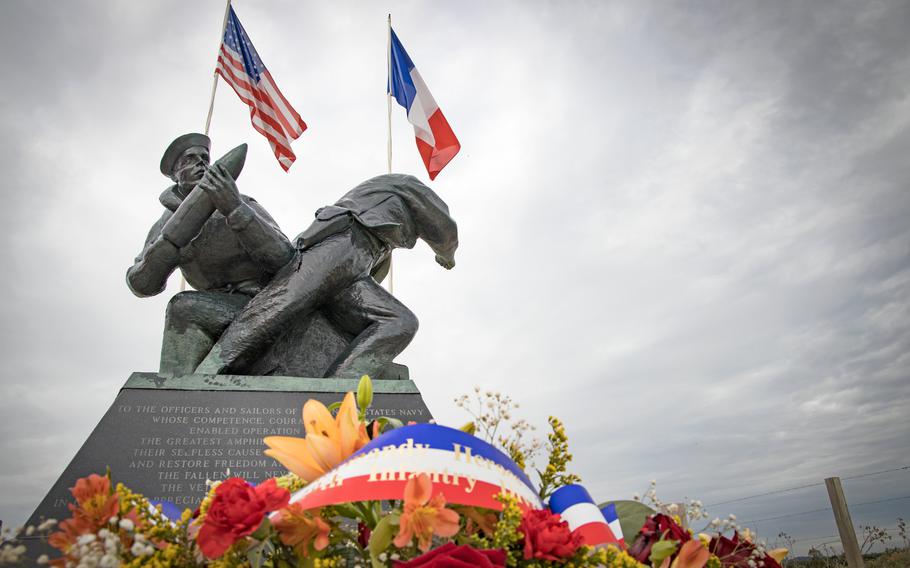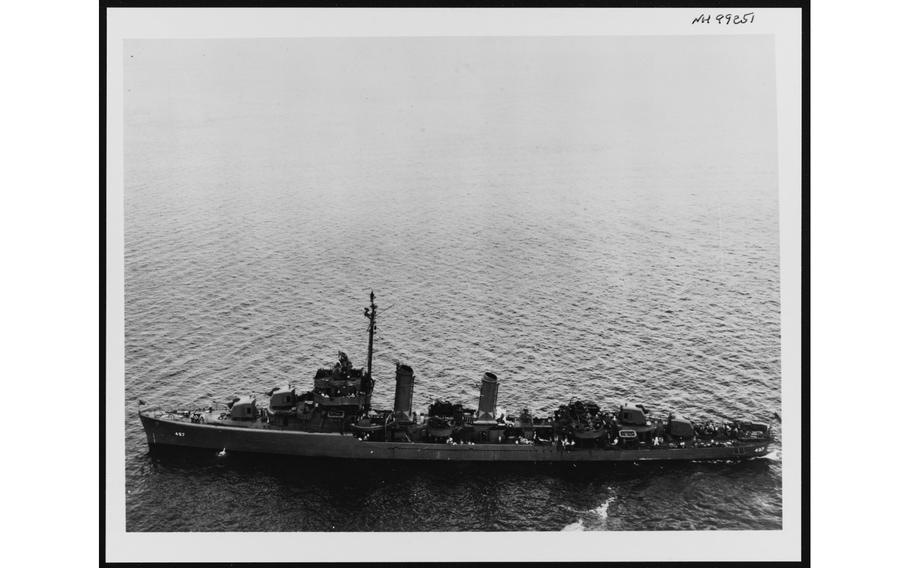
A monument at Utah Beach in Normandy, France, that honors U.S. Navy sailors who fought in the D-Day invasion during World War II is shown in 2019. The Allied invasion fleet consisted of thousands of warships, landing craft and commercial vessels. (Sarah Villegas/U.S. Navy)
NAPLES, Italy — As Allied forces stormed Nazi-occupied territory in France on D-Day, it became clear that the peril soldiers faced at Omaha Beach threatened the effort to liberate Europe from German control.
That’s when the commanding officer of the destroyer USS Frankford made the independent decision to bring the ship within 800 to 1,000 yards of the shore to fire on the enemy.
Other battleships followed, launching a second bombardment that proved decisive, Adm. Stuart Munsch, commander of U.S. Naval Forces Europe-Africa and Allied Joint Force Command Naples, said Tuesday during a naval history symposium near Sainte-Mere-Eglise, France, commemorating the 81st anniversary of D-Day.
The symposium and a U.S. Naval Forces Europe and Africa band concert, featuring a newly commissioned composition memorializing this year’s D-Day observance, were led by NAVEUR-AF.
The effort by Frankford’s commanding officer, who drew on experience gained during an earlier event at Anzio, Italy, was “a marquee example of adaptive (decision-making) that is most effective” in battle, Munsch said.
It shows the importance of “instilling in your command the ability of lower-level leaders … to make decisions based on the circumstances they see, understanding the principles of what are to be achieved,” he said.
The Allied invasion fleet — led by Adm. Sir Bertram Ramsay of the U.K. navy — consisted of thousands of warships, landing craft and commercial vessels that carried an advance formation of 175,000 soldiers, according to the U.S. Naval Institute.
Those ships also carried 100,000 tons of equipment, including 50,000 vehicles, such as tanks and jeeps.

The USS Frankford at anchor in the New York Harbor area following the removal of her torpedo tubes, June 19, 1945. (Naval History and Heritage Command)
Operation Neptune, the naval component of D-Day, was outlined by Ramsay in a more than 1,100-page document with incredible detail and clarity, Munsch said.
That clarity was key in the initial success of landing troops and equipment on the beaches of France and in providing cover, among other tasks.
But the plan also underscored the importance of following up with support, maintenance and rapid buildup of additional troops, Munsch said.
The Navy’s goal wasn’t its own glory but rather to serve the Army’s needs, said Munsch in quoting Ramsay’s guidance in the planning document.
“He set the standard for doing big operations and getting them right,” Munsch said later Tuesday in an interview with Stars and Stripes.
One of the war’s enduring lessons, he added, is that Allied victory was rooted in the earlier development of a military system that prioritized learning and technological innovation.
“That’s really what made a huge difference for us in World War II,” he said. “It may have been a very different result without that good work.”